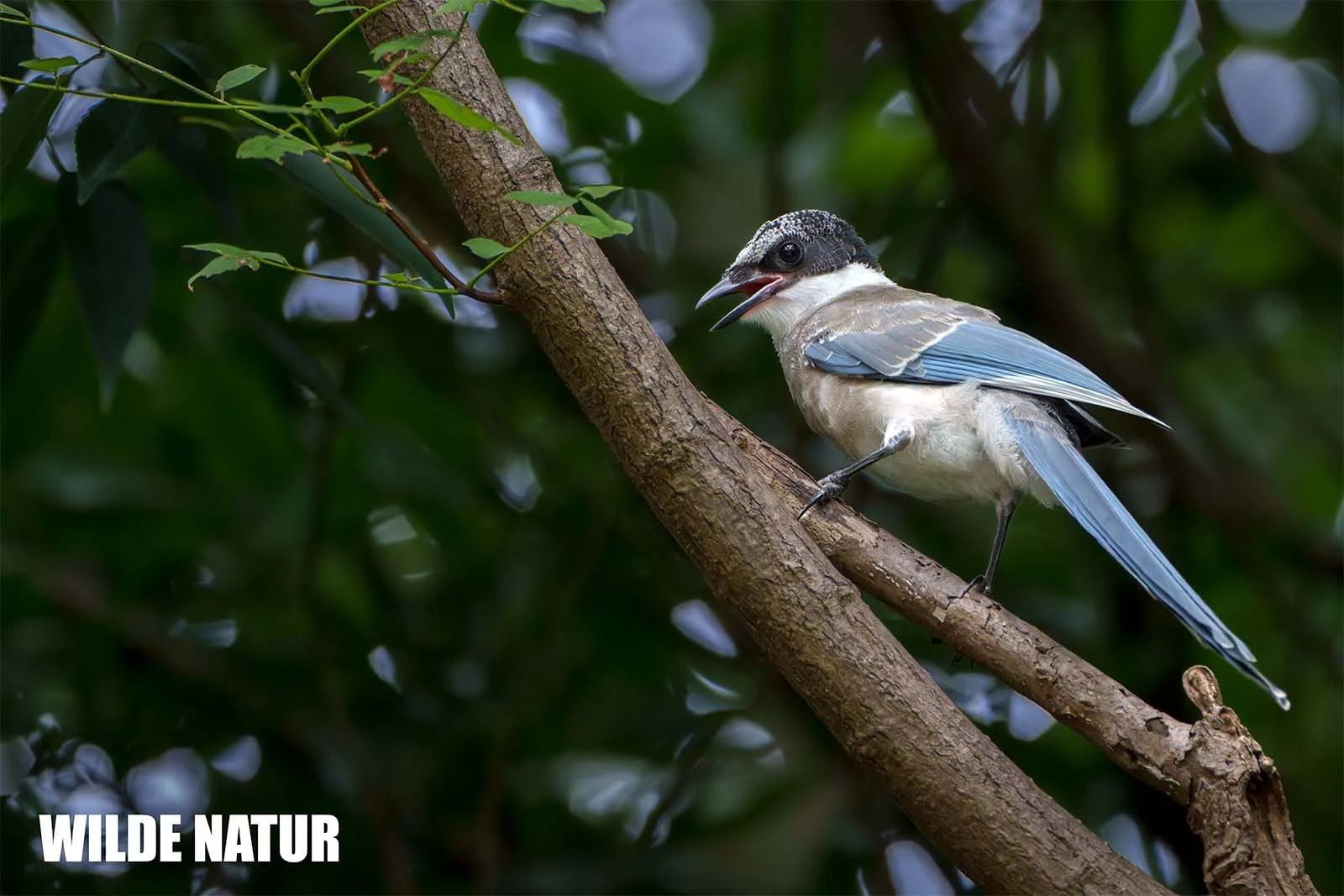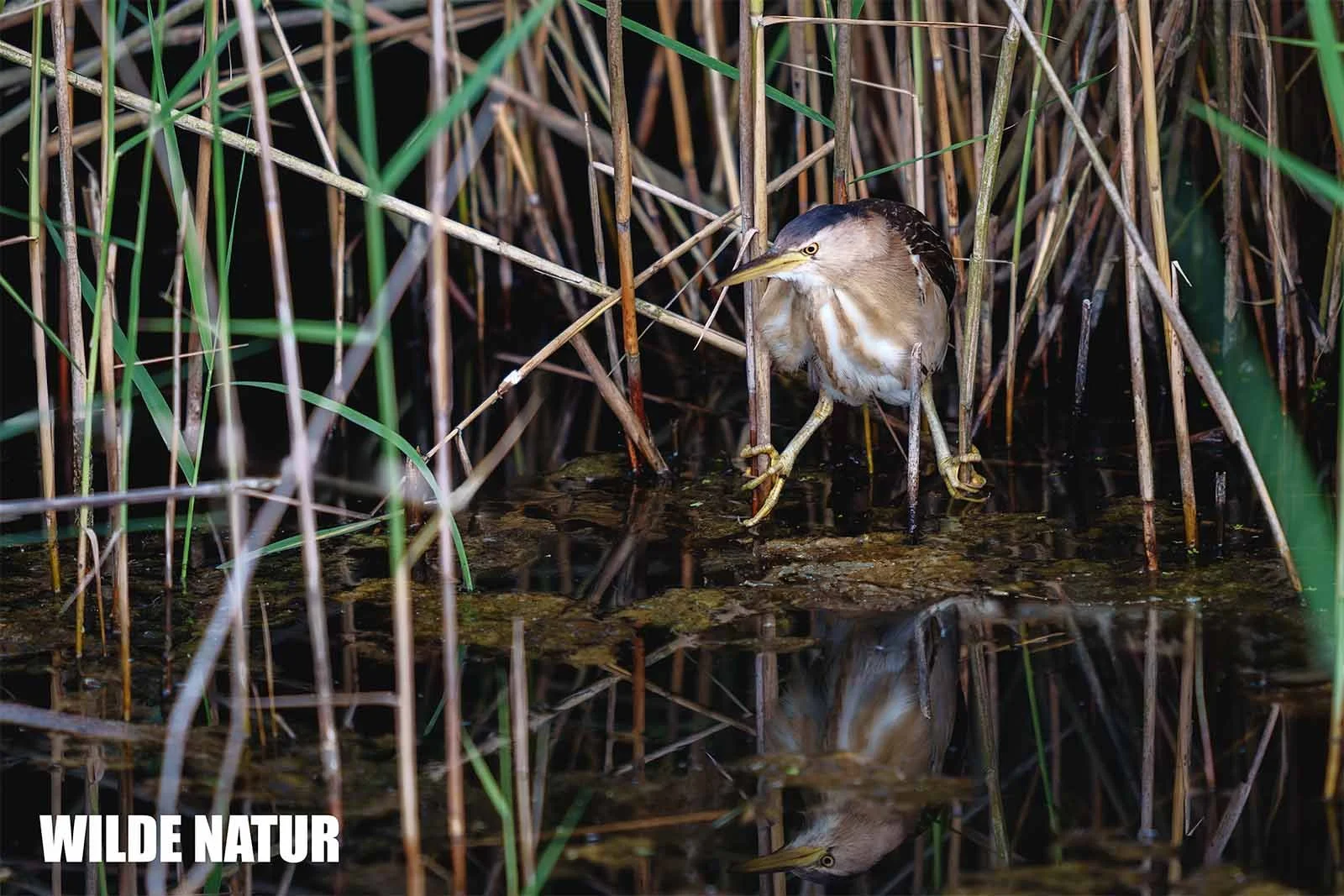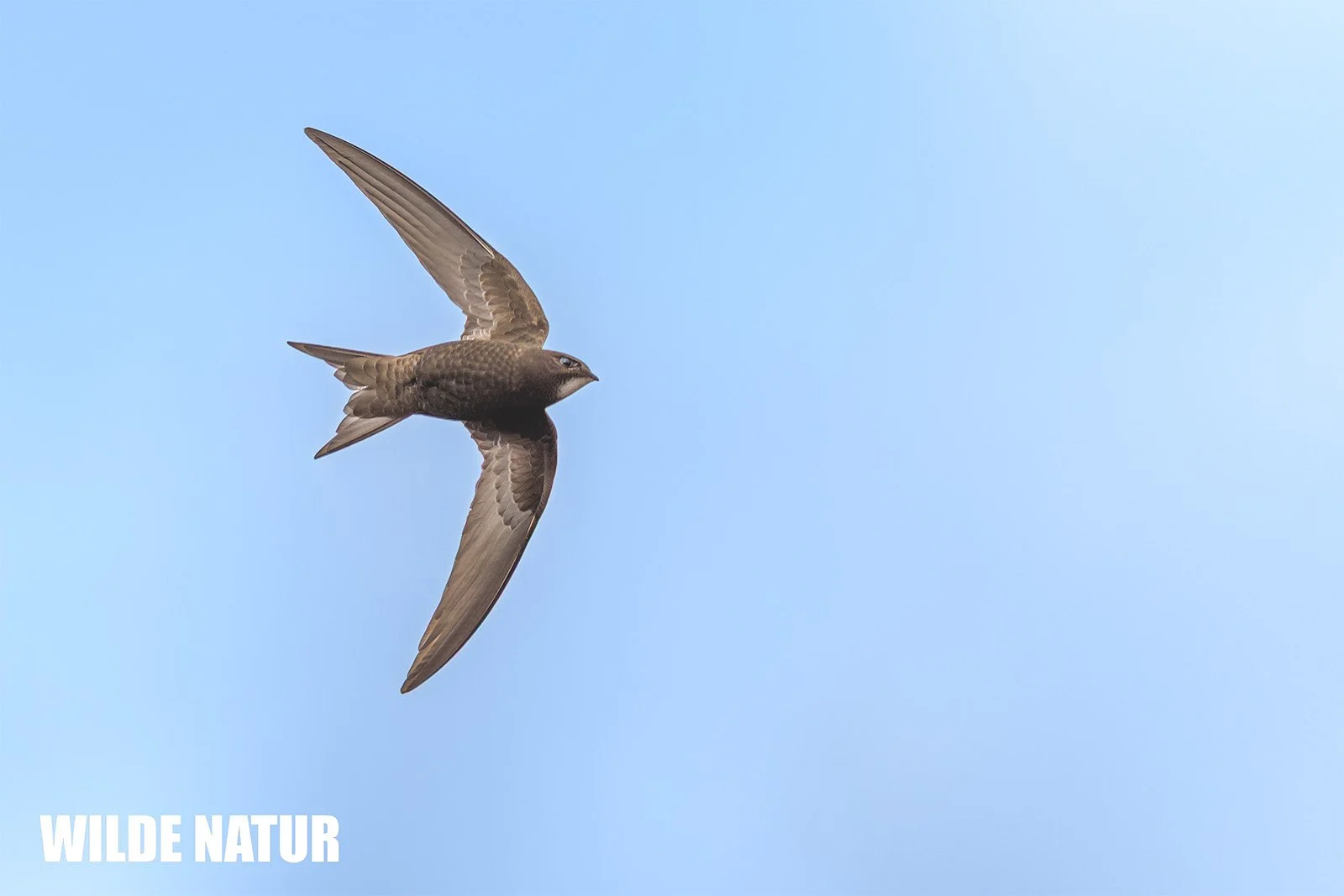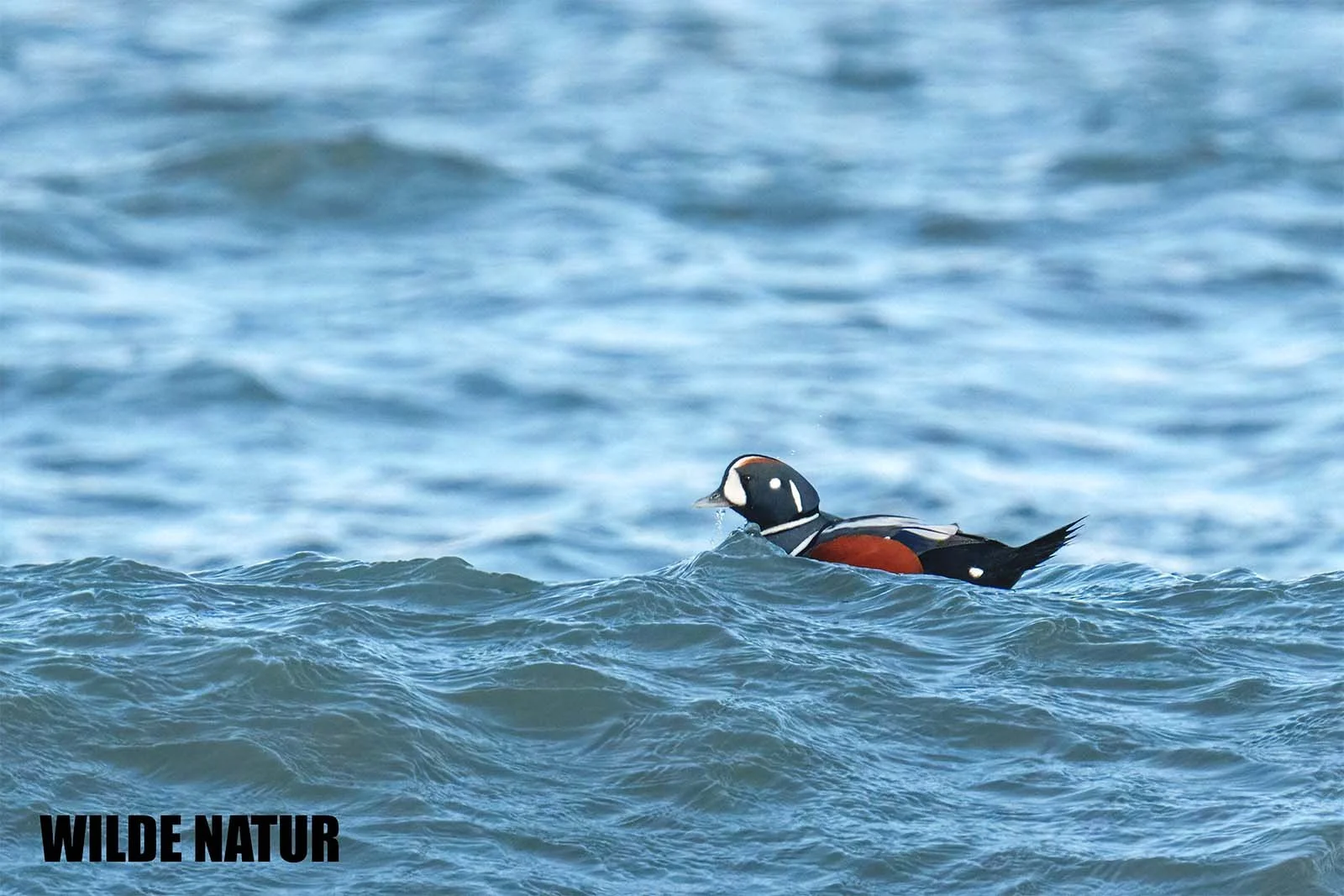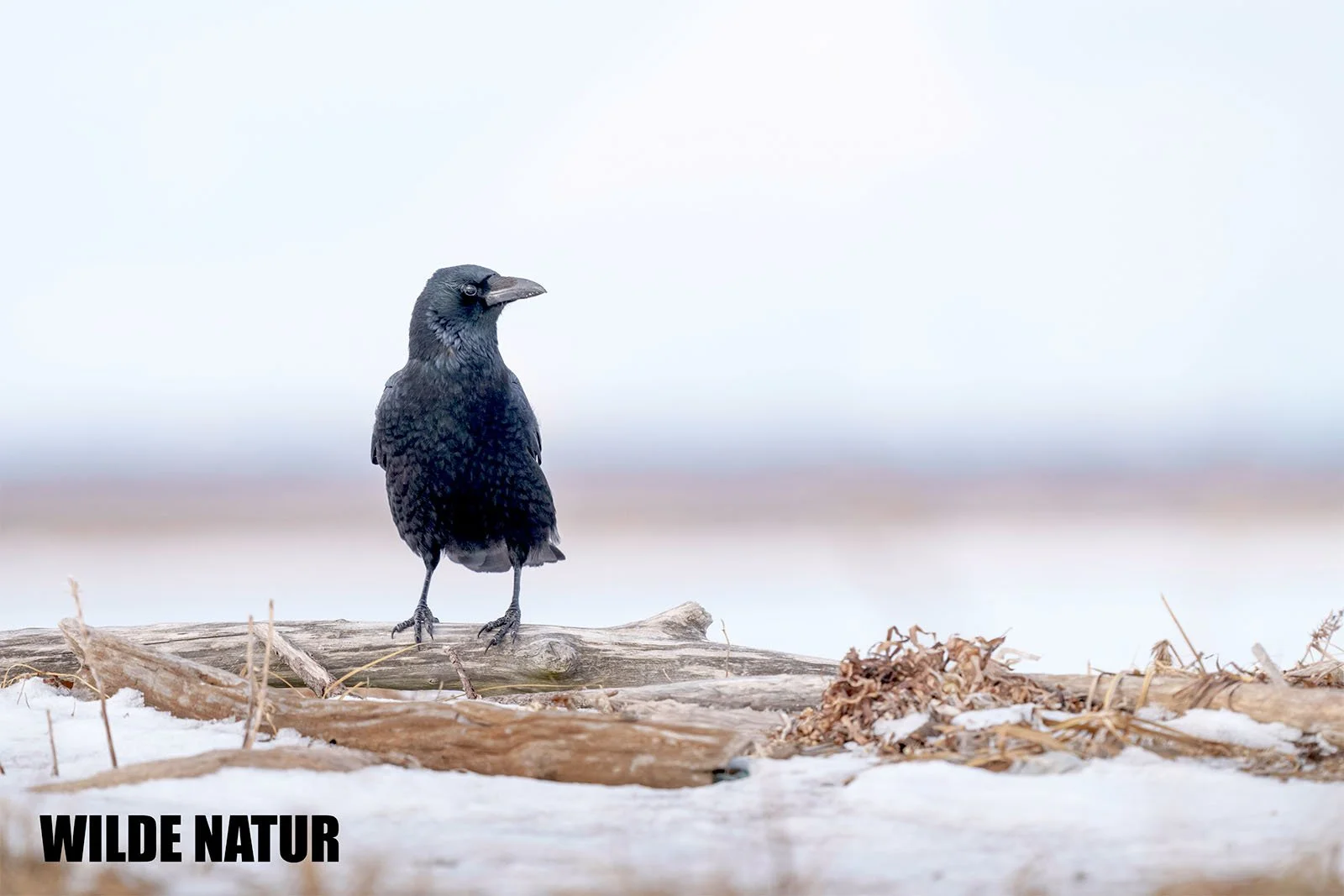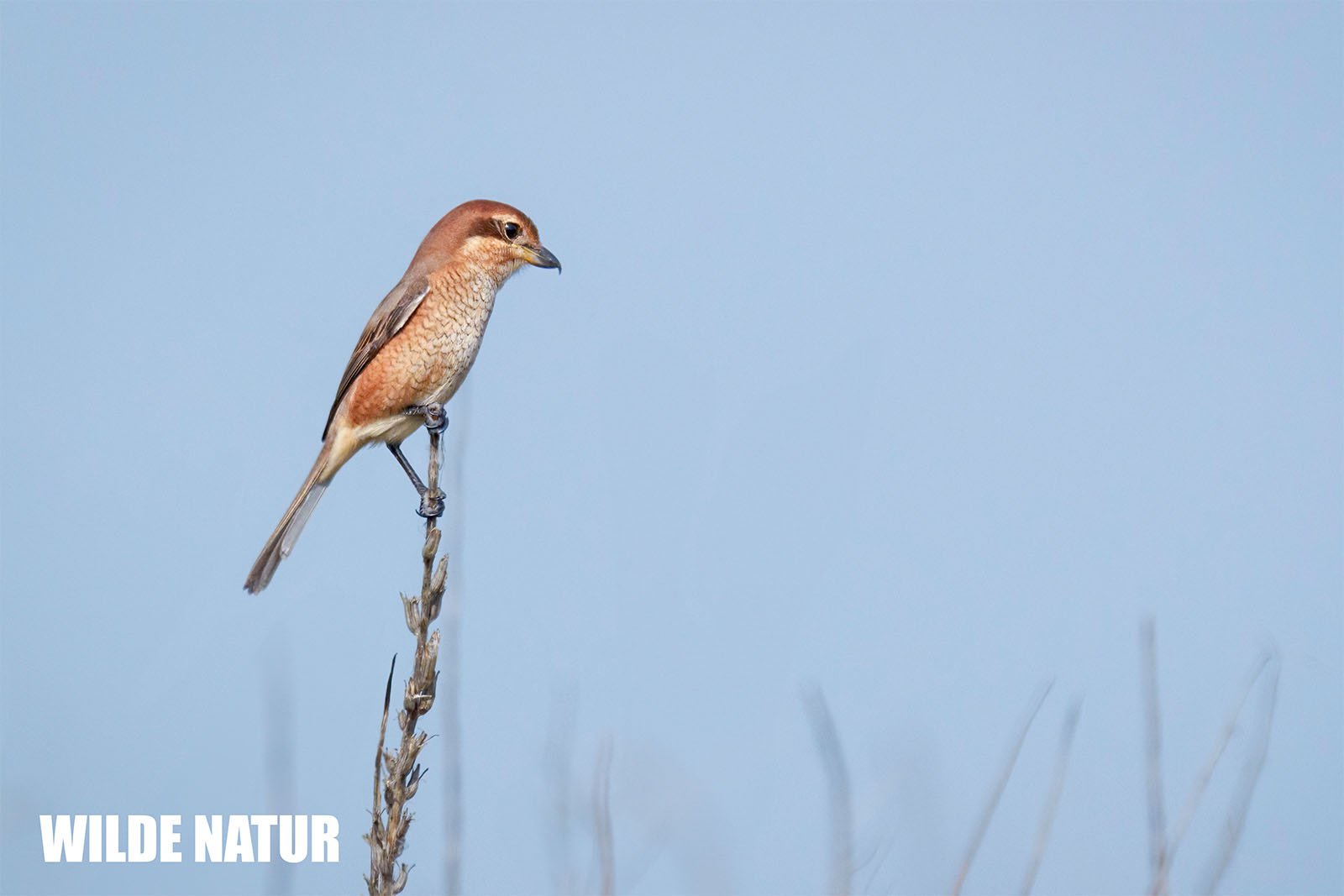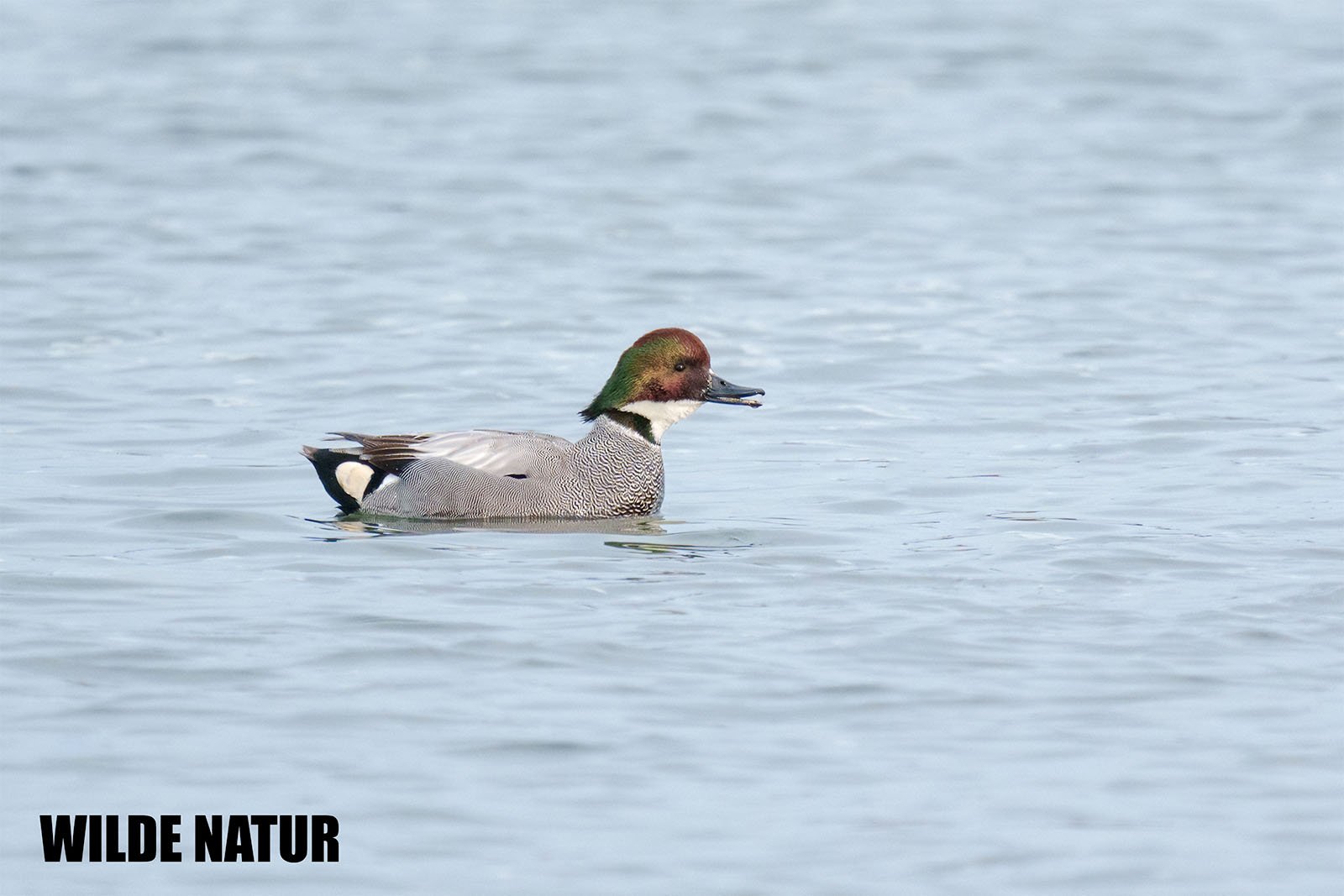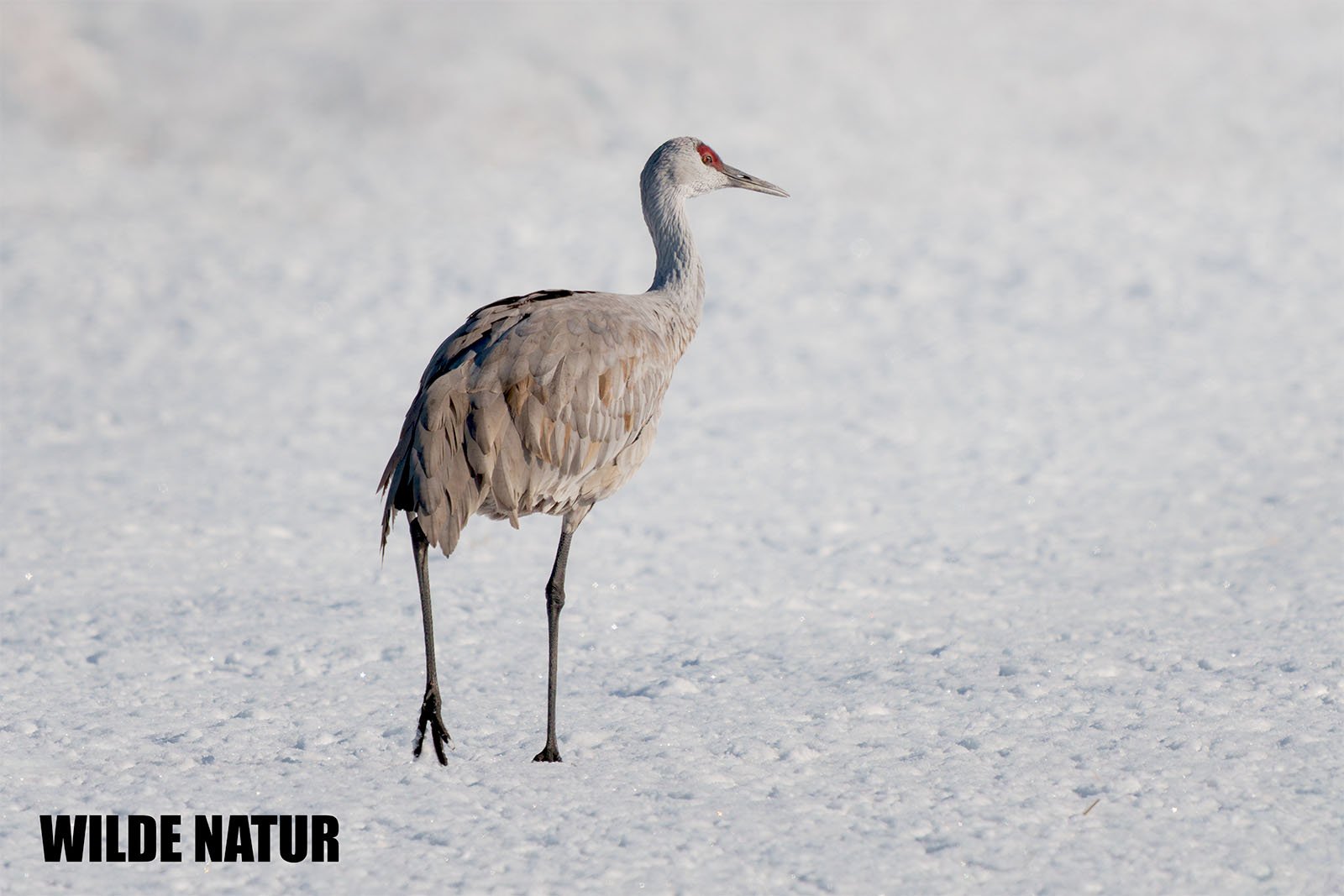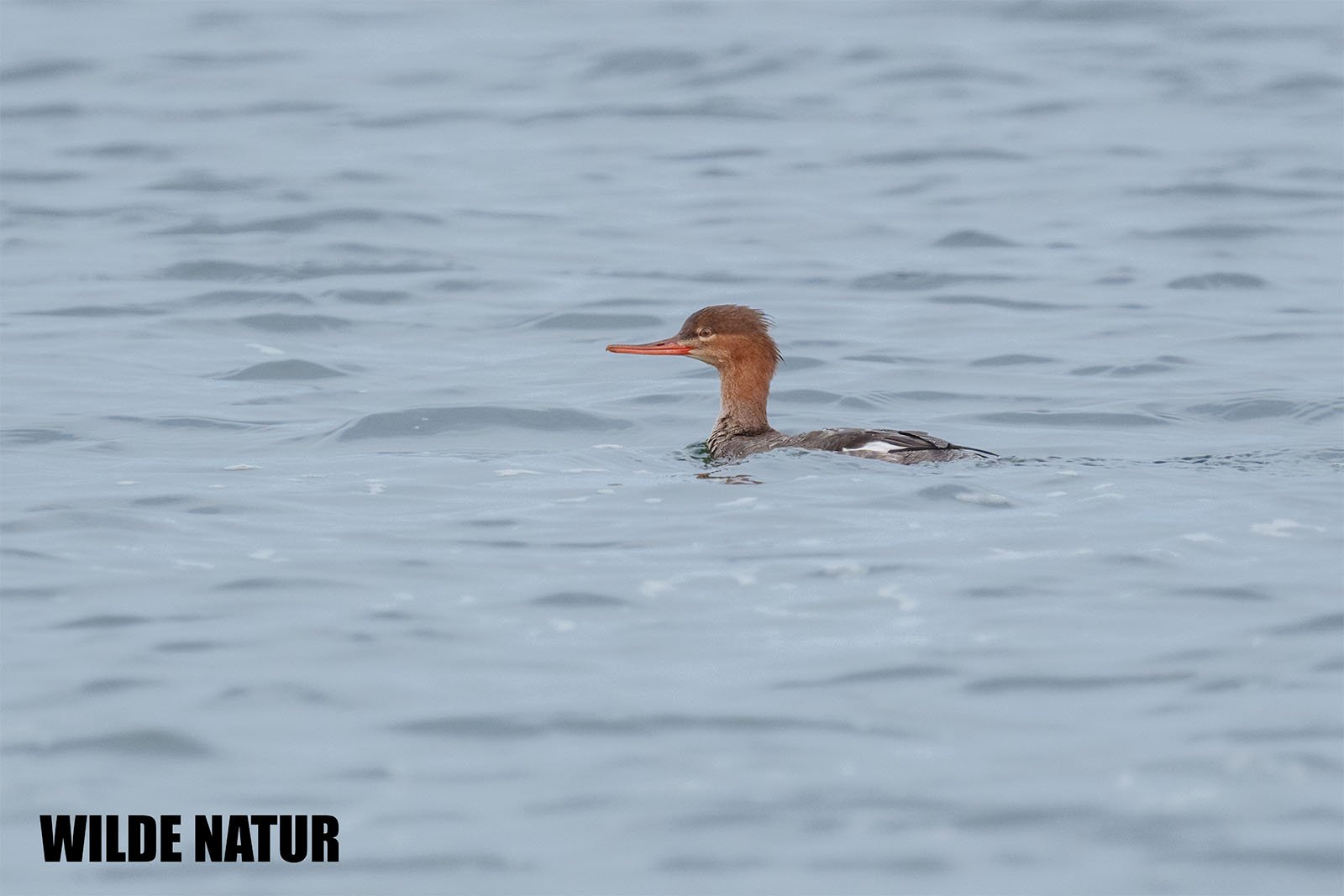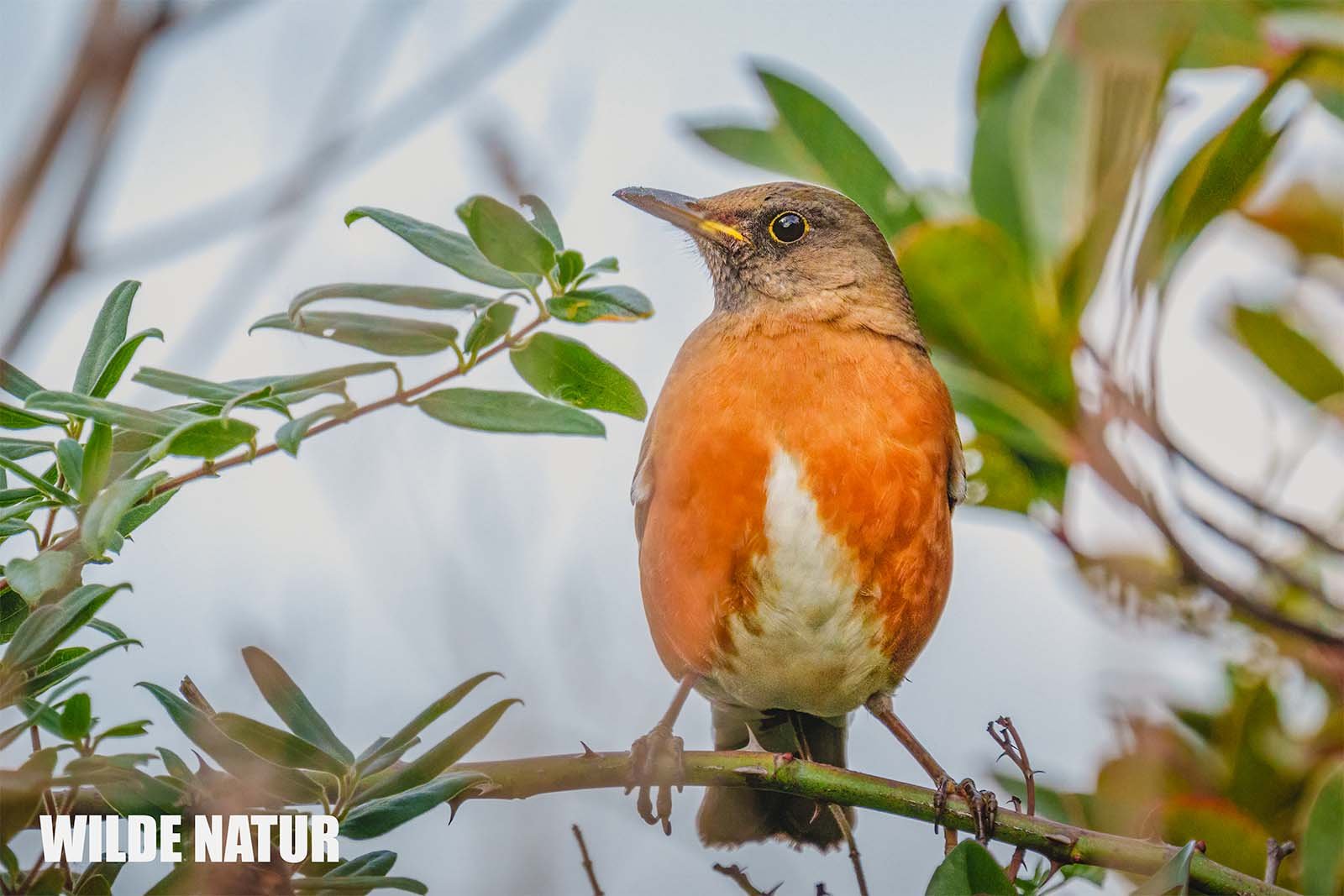Barnacle goose (Branta leucopsis)
Barnacle goose (Branta leucopsis)
Barnacle goose (Branta leucopsis)
Barnacle Goose – The Striking Black-and-White Beauty of Coastal Regions
The Barnacle Goose (Branta leucopsis) is one of the most distinctive geese in Europe. Its black-and-white plumage makes it easy to recognize, and its social nature ensures that large flocks move noisily through their wintering grounds.
Originally a resident of the Arctic tundra, it has successfully expanded its range into Central Europe over the past decades. It is now a regular breeder, particularly in coastal areas and wetlands. Its hoarse, barking "gäk" is often heard before the characteristic black-and-white birds come into view.
Thanks to its adaptability and strong social structure, the Barnacle Goose is one of the most fascinating goose species—both for ornithologists and wildlife photographers.
Table of Contents
- Key Facts
- Appearance & Features
- Habitat & Distribution
- Breeding & Nesting
- Calls & Behavior
- Diet & Feeding Habits
- Shortlist – All Key Facts at a Glance
- FAQ – Frequently Asked Questions
- Conclusion
1. Key Facts
- Size: 58–70 cm
- Wingspan: 130–145 cm
- Features: White face, black neck, light belly, contrasting wings
- Range: Arctic tundra, increasingly in Central Europe
- Breeding: Nests on inaccessible cliffs and islands for protection from predators
- Diet: Arctic grasses, herbs, seagrasses, and young crops
2. Appearance & Features
The Barnacle Goose is a medium-sized goose with a compact build and short neck. Its most striking feature is its sharply defined white face, which contrasts with its deep black neck.
Distinctive Features
- Head: Pure white, abruptly transitioning into the black neck
- Neck & Chest: Deep black, extending to the upper back
- Wings: Pale gray upperparts with darker sections, creating a striped pattern
- Belly: White to light gray, providing strong contrast to the chest
Flight Characteristics
- Bold black-and-white contrast is clearly visible
- Often flies in V-formation, calling loudly
- Flight appears strong and purposeful, with steady wingbeats
3. Habitat & Distribution
Breeding Grounds
- Arctic tundra, particularly in river valleys and fjords
- Prefers rocky coastal areas and islands to avoid predators
Wintering Areas
- Central Europe, especially along the North Sea and Baltic Sea
- Since the 1990s, it has become a regular breeder in northern Germany
Interestingly, the Barnacle Goose has increasingly adapted to agricultural landscapes, feeding on young crops in winter.
4. Breeding & Nesting
- Nests on inaccessible cliffs or small islands to avoid predators
- Often chooses grassy islands or high plateaus for nesting
- The nest is a simple hollow lined with plant material and down
- Chicks are precocial and leave the nest immediately after hatching
One fascinating fact: Young Barnacle Geese must often jump from high cliffs to reach the water—a dangerous but crucial first step for survival.
5. Calls & Behavior
Typical Calls
- A hoarse “gäk” or “kak”, especially loud in flocks
- Their collective calls are often compared to barking dogs
Behavior
- Highly social, usually found in large groups
- Moves in synchronized flocks, often seen grazing on meadows and fields
6. Diet & Feeding Habits
The Barnacle Goose is an herbivore, and its diet varies with the season and habitat.
Primary Diet
- In breeding grounds:
- Stems and leaves of Arctic grasses and herbs
- In wintering areas:
- Various grasses, seagrasses, herbs, and young crops
Feeding Behavior
- Similar to other geese, they graze in groups
- Their ability to adapt allows them to feed on farmland, taking advantage of young crops
7. Shortlist – All Key Facts at a Glance
- Size: 58–70 cm
- Wingspan: 130–145 cm
- Features: White face, black neck, light belly, contrasting wings
- Habitat: Arctic tundra, increasingly in Central Europe
- Nest: On cliffs or small islands for predator protection
- Call: Hoarse "gäk" or "kak," flocks sound like barking dogs
- Diet: Arctic grasses, seagrasses, herbs, young crops
8. FAQ – Frequently Asked Questions
Why do Barnacle Geese nest on cliffs?
Cliffs provide protection from predators such as foxes and polar bears.
Why are there more Barnacle Geese in Central Europe now?
Due to conservation efforts and their adaptation to farmland, populations have increased.
How can you recognize Barnacle Geese in flight?
By their sharp black-and-white contrast, compact body shape, and loud calls.
9. Conclusion
The Barnacle Goose is a striking goose species, easily recognized by its bold black-and-white contrast. It displays strong social behavior and has successfully adapted to new habitats in Central Europe.
To spot them, listen for their hoarse, barking calls and watch their synchronized flock movements.
Tip for Birdwatchers: The best time to see Barnacle Geese is in winter along the North Sea and Baltic Sea, where they gather in large groups on fields and coastal meadows.



